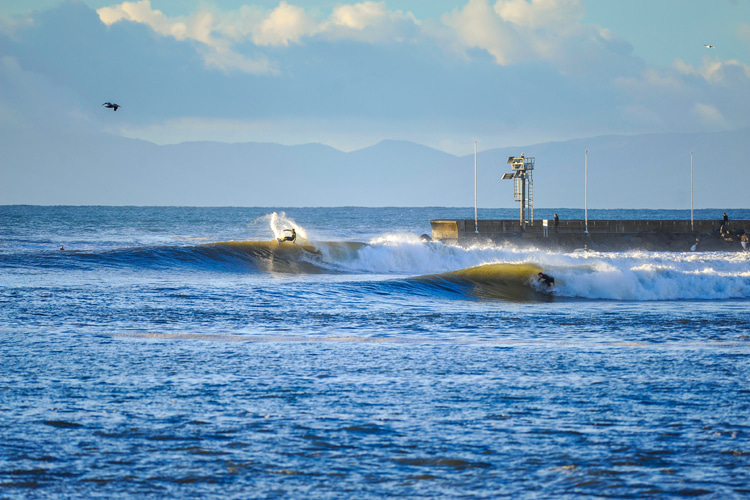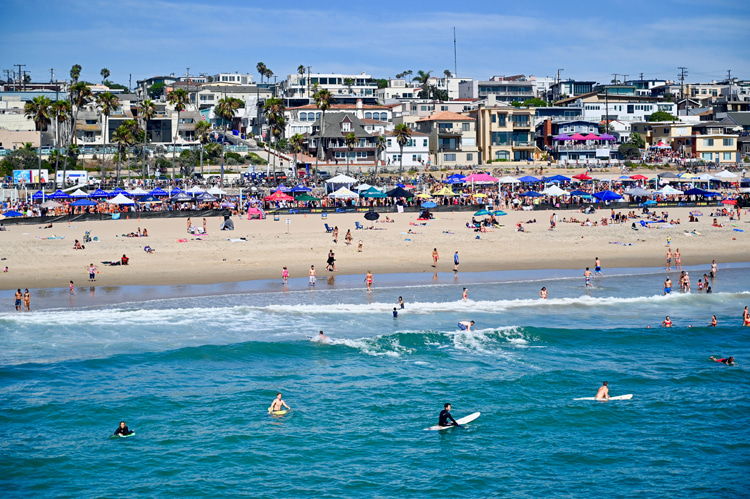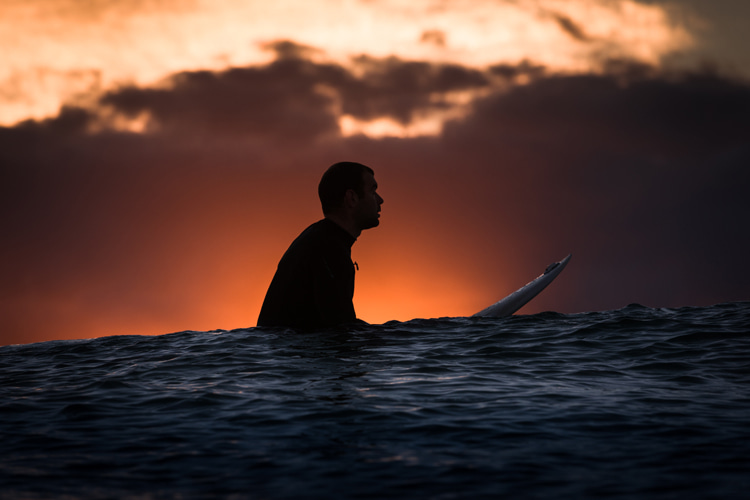The exponential growth in the number of surfing participants is undeniable, but the industry failed to accompany and capitalize on this opportunity. Here's why the sport lacks undergraduate and postgraduate courses and programs and how to draft a simple surf industry MBA program.
In the 1990s and early 2000s, the surf industry enjoyed some of its best years ever. The surfing community was engaged with the companies and vice-versa.
People proudly wore surfwear, and brands were an active part of the show, whether by sponsoring athletes and events or creating innovative initiatives that kept the sport united and tight.
Apparel and clothing sales soared, and when the internet was about to take the sport to a whole new stratospherical dimension, everything changed.
The 2007 American subprime mortgage crisis hit the world, and the world's largest surf companies entered their decadence decades.
Surf culture changed fast, too.
There were more indie surf manufacturers biting the toes of the big players, and recreational surfers were no longer willing to pay $90 for a pair of boardshorts.
The detachment period between brands and buyers continued, and the surf industry at large did not change the paradigm.
The most recognizable insignias insisted on selling their products the same way, using the same old methods and featuring the same old stereotypes.
Bankruptcy and merging news followed, but the industry kept walking the same path.
Despite growing dissatisfaction with surfing's most popular and powerful communications weapon - the Championship Tour (CT) - the fans have not been listened to enough.
Reality shows were launched, and wave pools welcomed professional surfers competing in controlled conditions.
It seemed like surfing had been taken over by highly trained and skilled businessmen with no connection whatsoever with the multidimensional reality of surfing.
And maybe that's the main issue - knowledge of the sport and its profoundly diverse roots and impacts.

The 360-Degree Vision
You cannot understand the surf industry without knowing how it went from a pastime and spiritual activity to the fully grown sport that it is today.
You have to learn the intermediate steps that took it from the sands of Honolulu's Waikiki Beach to Nazaré's Praia do Norte in Portugal.
These mid-level connections provide a deep understanding of what surfing is today and where it could go tomorrow.
At which point in time did the world surfing community require meteorologists to improve their scoring and optimize their traveling?
How does surf forecasting work? How did it become a business, and how could it go beyond the borders of the sport's need and into the mainstream?
What are the mathematical, oceanographical, and environmental parameters and variables that shape modern surfing?
What impact do they have on the world?
What is surfing's role in local tourism? Is there a recipe or guidelines for boosting a coastal town's economy without damaging it?
What does surfonomics teach local and national authorities? How do you frame surfing in the Olympic context in the medium and long term?
What are surf training's best high-performance practices, and how can small details in surfboard shaping influence the way we ride waves?
How can surfing and surfers become role models for what truly matters, including ocean and beach protection, healthy lifestyles, and respect for others?
The reality of surfing as an industry and a sport is unique. Despite having over 35 million participants in a 50 billion dollar market, it is still pretty much unexplored and fragmented.
The world's best banker will not necessarily turn a multi-billion-dollar company or competitive sports circuit into a highly successful business or organization.
And with the wave pool revolution and the introduction of AI-based products, the industry requires specific education programs.

Past and Present Postgraduate Studies in Surfing
The first decade of the 21st century saw the launch of several postgraduate studies in surf-related topics.
SurferToday highlighted their birth at the time, including:
- BSc (Hons) in Surf Science and Technology (Plymouth University, United Kingdom);
- Diploma of Sport Management: Surfing Studies (Southern Cross University, Australia);
- Bachelor of Science: Surf Science and Technology (Edith Cowan University, Australia);
- Surfing Administration, Marketing and Business Management (Universidade de Sao Paulo, Brazil);
However, these higher education courses were relatively short-lived, never quite got support from the industry, and were eventually discontinued.
Some colleges and universities still offer some postgraduate qualifications and degrees today. They include:
- FdSc Surf Science Degree (Newquay University Centre Cornwall College);
- Post-graduation in High-Performance Surf Coaching (Faculty of Human Kinetics, University of Lisbon);
- Science of Surfing Performance (School of Environmental and Life Sciences, University of Newcastle Australia);
However, the sport still lacks an in-depth, holistic program that provides present and future surf industry professionals with a 360-degree perspective of the sport, which can then be applied to business management or more sports-driven occupations within surfing.
It's impossible to separate modern surfing from the business side of it.
Simultaneously, those who address surfing as a product that can be monetized as any other sport or service will be on the wrong path.

Designing a Higher Education Surf Industry Program
If the goal is to prepare a surf industry professional for the multiple facets of the sport, the university or college should address the first three major rough pillars before designing the postgraduate program:
- Past: The history of surfing since its roots in Ancient Polynesia, Peru, Africa, and even China;
Present: Surfing in a global world dominated by social media and the explosion of wave pools;
Future: The role of technologies in surfboard shaping and design, surf forecasting, and how AI will impact several aspects of an increasingly digitized sport;
After identifying our rough guidelines, it's time to break them down into more detail. What should a surf industry-driven MBA course teach? Here's a draft for a two-year program:
1st Semester
- Past History of Surfing: The evolution of surfing from a pastime and fishing craft to a popular Hawaiian tourism activity;
- Introduction to Meteorology: The basics of the Earth's atmospheric phenomena;
- Surf Science I: The formation of wind and waves;
- Surfonomics I: What is the value of waves and how to estimate its economic impact;
- Surf Media: The history of surf media and their most prestigious offline and online publications;
- Ocean and Coastal Protection I: The impact of human-made activities on natural coastline features;
2nd Semester
- Modern History of Surfing: The evolution of surfing since the Duke Kahanamoku days to the shortboard revolution;
- Brand Communications: How to design, implement, and align a brand communication strategy with its target;
- Surf Science II: The growth of waves and the propagation of swells across the ocean;
- Sports Nutrition: The creation of an up-to-date high-performance diet for the modern professional surfer;
- Surf Training: The fundamentals of pre and post-surf fitness workouts;
- Surfboard Design I: The physics of surfing and surfboards and the evolution of templates and materials through time;
3rd Semester
- Wave Pool Technology: Understanding the most advanced wave pool technologies and their working principles;
- Surf Science III: Bathymetry, wave diffraction and refraction;
- Statistics & Consumer Search: Using Google products to understand consumer profiles, geography, and behavior;
- Active vs. Passive Internet Activation: How to activate a surf brand's website using professional digital marketing tools;
- Surfonomics II: A World Surfing Reserve Case Study: The analysis of successful surf economics strategies in a coastal community;
- Ocean and Coastal Protection II: Real-life examples and actions to defend and promote the shoreline and its natural assets;
4th Semester
- Event Management: Planning a surf contest from choosing the site and event window to surf judging and logistics;
- Introduction to the Surf Industry: The key figures, trends, and categories within the surfing business;
- Surf Science IV: Local winds, tides, global weather patterns, and the basics of surf forecasting;
- AI & Surfing: Identifying AI in the current surf industry business and reflecting on future uncharted opportunities;
- Surf Product Management: The complete life cycle of a surf product from an idea to the recycling bin;
- Surfboard Design II: How the template, the rails, nose, tail, fins, and core materials can be changed according to wave needs and surfer profile;
The Surf Industry MBA would include field visits to surf companies and surf-related businesses and organizations, in-class speeches from experienced industry veterans, film and video analysis, and group work.
The evaluation would blend coursework, exams, oral presentations (individual and group), and homework.
Ultimately, the MBA graduate should be able to:
- Explain the evolution of surfing from its roots to modern times;
- Analyze and read a surf report and a weather map;
- Forecast the ocean conditions at a given spot;
- Plan a healthy long-term sports nutrition plan;
- Design a monthly pre and post-surf physical training program for a professional surfer;
- Start a small surf business using marketing, communications, and digital resources available freely;
- Identify the major organizations of the surfing world, including businesses, non-governmental organizations, and sports entities;
- Point out and propose solutions for ocean, beach, and coastal issues;
- Detail the world's most widely used wave pool technologies;
- Explain the basics of surfboard design;
- Set up a medium-sized surfing competition;
- Manage any department of any surf industry organization;
Words by Luís MP | Founder of SurferToday.com
